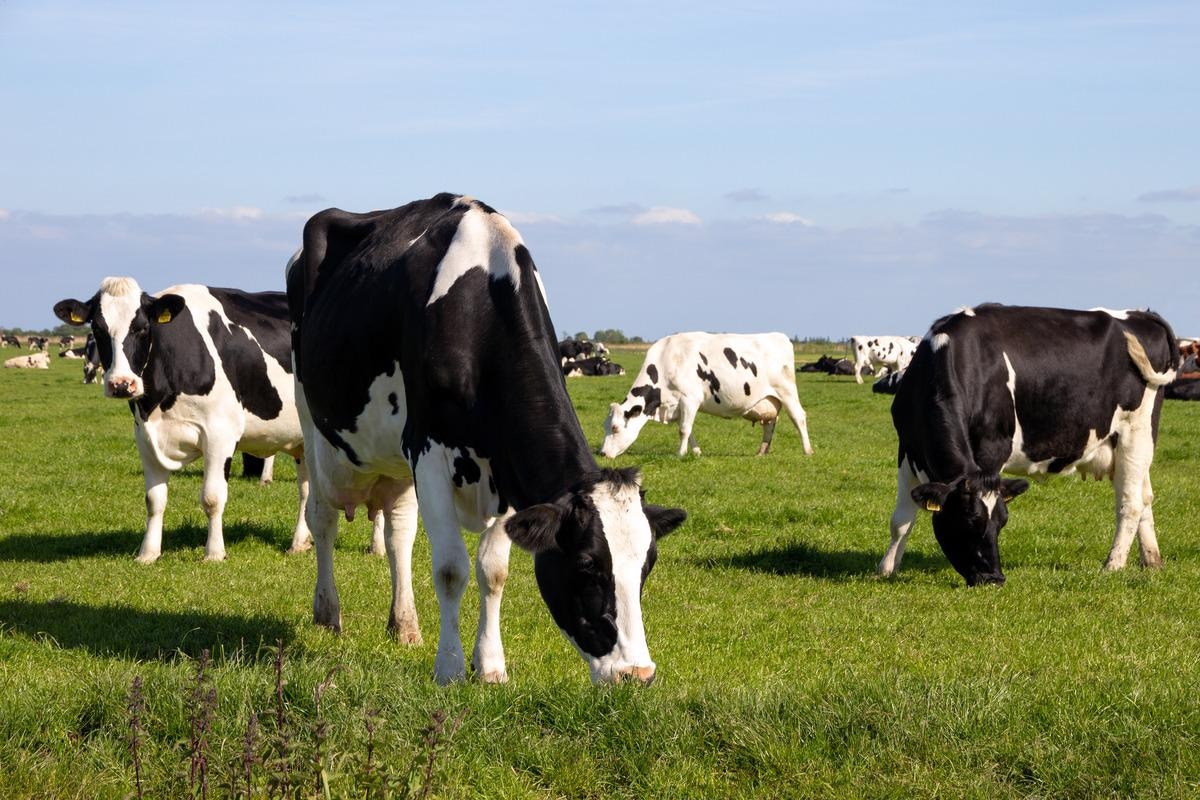In a recent study published in Animals, researchers observed severe acute respiratory syndrome coronavirus 2 (SARS-CoV-2) seroconversion in lactating cows.
 Study: First Description of Serological Evidence for SARS-CoV-2 in Lactating Cows. Image Credit: VanderWolf Images/Shutterstock
Study: First Description of Serological Evidence for SARS-CoV-2 in Lactating Cows. Image Credit: VanderWolf Images/Shutterstock
Background
The coronavirus disease 2019 (COVID-19) pandemic is caused by SARS-CoV-2, a beta-CoV from the Coronaviridae family. It is an enveloped virus containing single-stranded ribonucleic acid (RNA) genome. CoVs emerge from wildlife hosts and infect domestic animals, livestock, and humans. Therefore, they could result in epidemics or a global pandemic with varying degrees of morbidity and mortality.
Genome sequencing studies have indicated that SARS-CoV-2 might have emerged from bat CoVs albeit the intermediate host is yet to be identified. Natural SARS-CoV-2 infection has been recorded in different animals, including dogs, minks, cats, otters, tigers, lions, hamsters, and hippopotami, among others.
Nevertheless, SARS-CoV-2 infection has not been observed in farm animals like goats, sheep, buffaloes, cows, or hens despite contact with SARS-CoV-2-positive breeders. Researchers have revealed a low susceptibility to SARS-CoV-2 in experimentally infected cattle. As such, the unknown or latent zoonotic potential of SARS-CoV-2 could be concerning for farmers and pet owners.
The study
In the current study, researchers investigated the presence of bovine CoV (BCoV) and SARS-CoV-2 in lactating cows on a farm in Ariano Irpino, Italy, where 13 of the 20 farmworkers developed COVID-19-related symptoms in April 2021, and one person died. Nasal and rectal swab samples were collected from 24 lactating cows. Milk and blood samples were also obtained from cows. The animals were not vaccinated against BCoV in the past.
Sampling was performed by local veterinary personnel, and samples were frozen until further processing/testing. Nucleic acids were extracted from milk and swab specimens in biosafety level 3 (BSL-2) labs, and a reverse-transcription quantitative polymerase chain reaction (RT-qPCR) was carried out. Three SARS-CoV-2 genes, ORF1ab, nucleocapsid (N), and spike (S), were amplified.
Serum samples were assessed qualitatively for anti-SARS-CoV-2 antibodies using an electrochemiluminescence immunoassay, a double-antigen sandwich assay featuring a recombinant N antigen. Next, anti-S receptor-binding domain (RBD) antibodies were quantified with the Roche Elecsys anti-SARS-CoV-2 test. Results were expressed as a cut-off index (COI), and samples were deemed negative if anti-N antibodies were < 1.0.
Microneutralization tests (MTN) were performed for SARS-CoV-2 and BCoV. Cows were categorized into three groups based on their age – one-to-five years, 6-10 years, and > 10 years. Fisher’s exact test for comparing age/pregnancy status to nAbs and Pearson correlation analysis for correlation between antibodies and age were conducted. P values < 0.05 were deemed statistically significant.
Findings
Milk samples were not collected from three cows as two of them were primiparous, and the other was a dry cow. The authors found that all swab and milk samples were negative for SARS-CoV-2 RNA. All samples were also negative for BCoV. Eight (33%) of serum samples lacked anti-SARS-CoV-2 antibodies. Anti-N antibodies were detected in 11 (46%) serum samples, and anti-S antibodies were found in 14 (56%) samples.
Further, neutralizing antibodies (nAbs) against SARS-CoV-2 were detected in 13 (54%) cows, and six were pregnant. None of the cows who developed nAbs showed any signs of fever, respiratory symptoms, or diarrhea. Most cows (11) with nAbs were five years or older, six from the 5-10 age group, and five above 10 years. Similarly, four of the six pregnant cows (with nAbs) were aged 5-10 years; one was from the one-to-five age group, and the other was > 10 years.
A statistically significant correlation was observed between the presence of nAbs and the age of cows with the Fisher’s exact test. Further, a statistically significant two-sided p-value was noted when the one-to-five age group and >10 years were compared. The authors did not find any correlation between nAbs and pregnancy. Pearson’s correlation analysis revealed a significant correlation between the age of cows and anti-S antibodies and nAbs.
Conclusions
The researchers found anti-SARS-CoV-2 antibodies in cows, while anti-BCoV antibodies were not detected. These observations implied that cattle exhibited low susceptibility to SARS-CoV-2 and might not serve as reservoirs.
Nonetheless, the authors posit that in regions with a considerably large population of cattle and high SARS-CoV-2 prevalence, close contact between farmworkers and livestock might result in reverse zoonotic infections similar to what has been observed in other susceptible animals like minks, dogs, and cats. However, more studies are required to understand SARS-CoV-2 infections in cattle better.